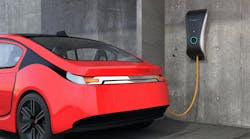A snapshot of the electrical-distribution business as it is today - and a look at where it may go. Part 2 Many of the basics for electrical distributors remain the same as when this type of business evolved at the beginning of the 20th century. Although much remains the same, there have been and will be changes as well. This two-part industry analysis gives a glimpse of the business as it is today and looks at where it may head in the future. Last month's article looked at the structure of the electrical distributor's business, additional roles of distributors and sales forecasts. This month's article looks at the markets, customers and the products.
Channels to market for electrical products. Although electrical distributors may represent the traditional channel to market for electrical apparatus and supplies for much of the 20th century, the final decades saw the development of a profusion of alternative routes to market.
* Full-line distributors of electrical products.
* Specialized and hybrid distributors.
* Service businesses that get into the sale of electrical products - like energy service (ESCO) or demand-side management (DSM) companies, motor repair shops and lighting maintenance companies.
* Retail or consumer-based channels, like home centers, super stores, catalog sellers and retail lighting showrooms.
* Distributors from other wholesale distribution trades, like plumbing or industrial supplies, that deal in electrical products as well.
* Manufacturer-based channels, including direct sales and buy/sell reps.
* Web-based alternatives, such as auction sites, virtual distributors and MRO- or construction-oriented virtual communities built around a purchasing function.
* Other channels, like the gray market.
The common thread among the alternate channels can be summed up in one word: specialization, according to a study on alternate channels, Facing the Forces of Change 2000, which was published by the National Association of Wholesaler-Distributors (NAW), Washington, D.C. The alternate channels against which traditional electrical distributors compete all specialize either in a product area - like lamps, telecom products, industrial controls, or motors; in customer segments - like utilities or home improvement; or in marketing techniques - such as catalog sellers.
The products that distributors sell. The main purpose of an electrical-distribution business is to make hundreds of products from various manufacturers available in one place. Those products from different manufacturers must go together to deliver the end result the customer wants, whether it be a well-lighted kitchen or a fully automated factory floor. The average electrical distributor stocks 245 product lines from 162 different manufacturers.
According to Electrical Wholesaling's 1998 Profile Study conducted by Intertec Publishing's research department, on 50% of the orders that distributors write, customers request products by generic item descriptions; about 49% of the time one or more brands is specified. A third of the time customers request a single brand.
Distributors also report that when customers request brands not stocked by the distributorship, 66% of the time they can convince the customer to accept a substitute brand. Two key reasons that distributors add new lines are to fill out gaps in existing product lines (43%) and to take advantage of situations when a current supplier is adding a line to its product offering (28%).
The Customers. Electrical distributors sell across a broad range of business and industry, government and to the public. Given the widespread use of electricity, that's no surprise. The customers to whom the electrical distributor sells remain much the same as they were for the last quarter of the century, with some shift in emphasis. The electrical contractor remains the predominant customer, year in, year out. Industrial MRO and factory automation has grown in importance, while sales to the general public have scaled back.
The markets. Electrical distributors sell products for use across a broad cross section of U.S. business and industry. New construction - residential, commercial, industrial and nonbuilding types - represents a third of the market for electrical products. Industrial MRO accounts for close to 20% of their business; various industrial uses represent more than 45% of the market. Other uses range from utility products to export.
Although the ebb and flow of construction contracts and factory output affect their sales, electrical distributors as a whole find their fortunes more closely tied to the state of the economy than to any one segment. In the past, electrical distributors' sales tended to lag the economy up or down by about six months. This relationship may or may not hold in the new economic model now playing out.
Some electrical distributors make strategic decisions to change the markets they serve - for example, to go after industrial business to counterbalance weak construction markets or to add the utility market to take advantage of a perceived opportunity. Such moves rarely affect the market mix overall.
Sometimes distributors move in a direction en masse. In the 1990s many moved away from the small-contractor market for which they were hard-pressed to compete against the home centers, especially The Home Depot. Many added a "high-tech" aura to their businesses to differentiate themselves from their home center competition. This shift shows up as an increasing market mix percent in factory automation and various industrial-type business.
The market mix turns out to be heavily influenced by the market that's hot the year the survey goes out to electrical distributors. During the late '90s, construction was very strong. Commercial construction had revived, and distributors latched on in a big way.








